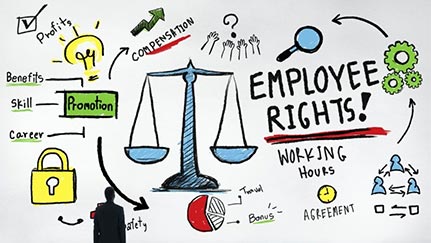It is no surprise to many employers that a worker shortage exists. Working-age workers' availability shrank in 20201; this is the first time this has occurred in the nation's history. The U.S. employee age group affected is those 16 to 64 years of age. With the availability of workers shrinking or with a nearly imperceivable increase, employers are caught in the middle while the U.S. economy prepares for explosive growth.
Due to these labor market challenges, it may be the first time an employer considered hiring minors. While there may be a place for minors in non-agricultural employment, businesses must know and apply the wage and hour rules set forth by the U.S. Department of Labor (USDL). A helpful resource for insights into hiring minors is entitled Young Workers. A worker's age determines the hours they may work (i.e., both time of day and total hours) and occupations where they may be employed. Common age groupings include under 14 years old; 14 or 15, and 16 or 17.
Before hiring a minor, develop a list of necessary work activities they will perform. With this list in hand, you can determine if a minor can perform the work and, per regulations, the minimum age required for this work. When hiring young workers, it is important to know and comply with the Fair Labor Standards Act (FLSA). Once a person reaches 18 years of age, the restrictions applied for workers 14 to 17 years old no longer exist from a federal rule perspective. Though their age may not impact the workplace hazards, time of day, or total hours they work, do not forget to ensure they have the knowledge, skills, and ability to perform the assigned work safely.
It is important to know state labor laws which may be more restrictive than federal rules. The USDL hosts a list of state labor offices and contact information. The Occupational Safety and Health Administration (OSHA) offers resources targeting workers 16-24 years old, pointing out the rights of young or inexperienced workers. OSHA requires employers to provide a safe work environment for all their employees, regardless of age or an employee's newness to workplace hazards. Young and inexperienced workers may be synonymous in our minds. It is important to remember that not all inexperienced workers are young workers. An inexperienced worker may be a mature adult who is recareering to a new employment sector, changing jobs, relocating to a new location doing the same work, or working in a work environment that has changed. The common risk for young or inexperienced workers is their unfamiliarity with the workplace, difficulty recognizing hazards, and applying effective hazard controls.
They likely want to impress their bosses by working hard and as quickly as possible. An equation here is Inexperience + Speed + Wanting to Impress = High Risk. So, if you want safe workers, take the time required to properly educate and supervise them, especially during the first 90 days on the job or when hazard exposures and their controls have changed. Do not leave hazard awareness and control training to chance. Here are some work practices that employers can adopt to help safely onboard and maintain workplace safety:
- Accept that additional training and supervision is required for young and inexperienced workers and provide it
- Ensure leadership understands and complies with federal and state wage and hour laws
- Educate supervisors in their role in managing young and inexperienced workers
- Involve all workers in safety – maintaining a culture that encourages working safely
- Train and closely monitor young and inexperienced workers on hazards in their workplace and expected safe work practices
- Restrict young and inexperience workers from hazardous areas, reducing their likelihood of unintended exposures and injuries
- Safety committee involvement by young and inexperienced workers may assist them in learning about the business and safe practices
Applying the points listed above, with other good onboarding and supervisory leadership practices, can prevent losses. Ensuring employees are educated in safe and effective work practices today will help to prevent negative business impacts from losses, decreased quality, or under-production in the future. Time is money; investing time now with young and inexperienced workers will lead to positive financial returns.

